Nubuck, suede, and roughout leather each exhibit unique properties that greatly impact the durability and visual aesthetics of your leather products. These materials are utilized in a wide array of items, from trendy shoes to sophisticated jackets, each requiring specific care methods tailored to their characteristics. Nubuck is celebrated for its remarkable durability, stemming from its dense grain structure, making it an ideal choice for items subject to significant wear. On the other hand, suede is known for its soft, luxurious feel, making it perfect for fashionable pieces. Roughout leather is especially susceptible to water damage, necessitating additional protective measures. By understanding these differences, you can confidently choose the most appropriate leather type for your needs and ensure proper care. This extensive guide will help you identify each leather type and provide you with expert care practices for your leather items.
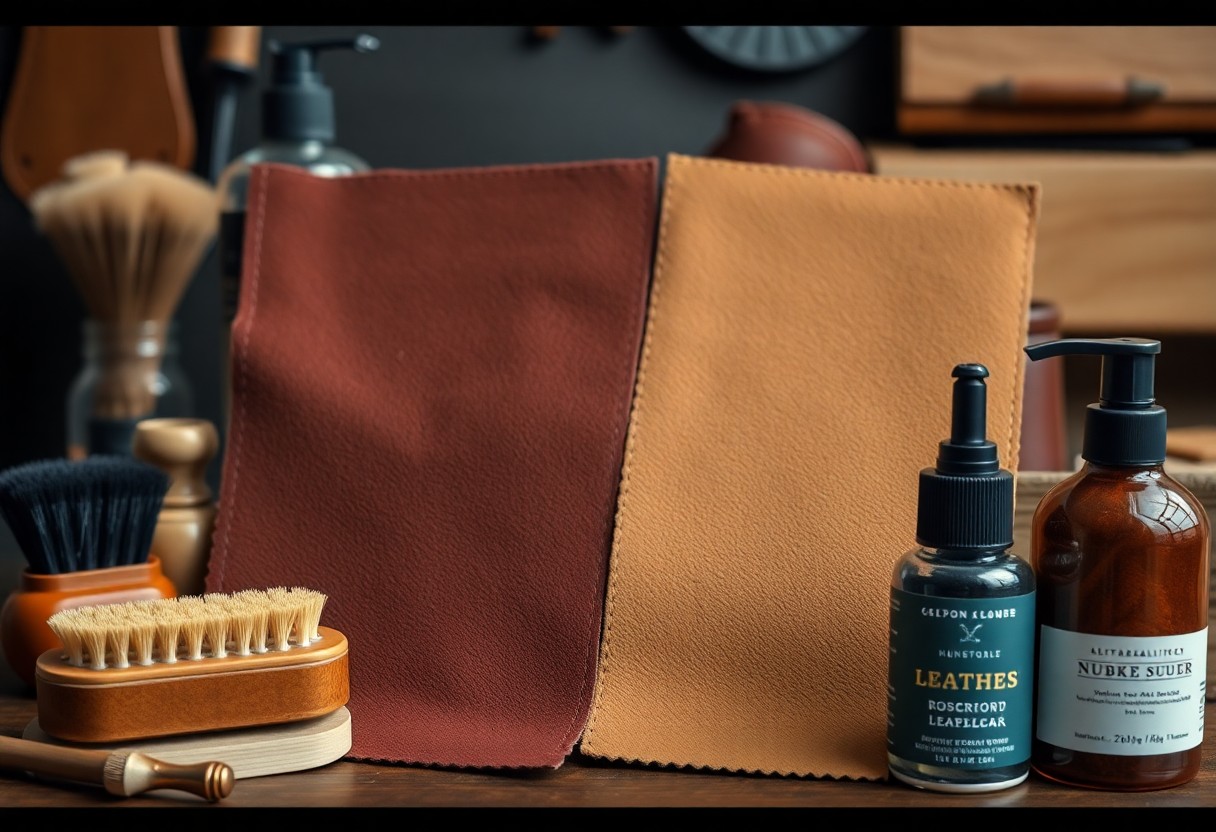
Unlock the Distinct Features of Various Napped Leather Types
For both leather enthusiasts and prospective buyers, understanding the different napped leather types is essential for making well-informed purchasing choices. These varieties encompass nubuck, split suede, full reverse suede, and roughout leather. Although these materials may seem similar at first glance, each possesses unique characteristics and specific uses. Acquainting yourself with these variances will empower you to select the most suitable leather for your particular needs and preferences, ensuring satisfaction with your purchase.
| Type | Key Features |
|---|---|
| Nubuck | Sanded grain surface, durable |
| Split Suede | Made from corium layer, less durable |
| Full Reverse Suede | Full grain leather reversed, strong core |
| Roughout | Untreated corium surface, rugged texture |
| Care Requirements | Waterproofing needed for all types |
Delve into the Exceptional Qualities of Nubuck Leather
While nubuck may look similar to suede, it distinguishes itself by offering superior durability attributed to its unique grain leather composition. The surface of nubuck is delicately sanded to create a fine, velvety texture, which significantly enhances its resistance to wear compared to other napped leather types. This quality makes nubuck the preferred choice for individuals seeking longevity in their leather products, particularly in environments with high levels of wear and tear, such as outdoor settings or frequent use scenarios.
Gain Insight into the Features of Split Suede Leather
To truly appreciate split suede, it is crucial to understand its origins, as it is crafted from the corium layer of the animal hide. This specific leather is characterized by loose fibers and a soft texture, inviting to the touch, but it demands careful maintenance due to its porous nature. The variations found in split suede can differ considerably depending on the animal hide used and the specific processing techniques, ranging from lightweight fashion suede to heavy-duty footwear suede, each tailored for distinct applications in both fashion and functionality.
Explore the Unique Attributes of Full Reverse Suede Leather
Understanding full reverse suede requires grasping its unique construction, which essentially involves a full-grain leather turned inside out. This innovative method results in a suede-like surface while maintaining the structural integrity of the full-grain leather. The intact grain layer contributes to enhanced water resistance and durability when compared to split suede, making it a favored choice for high-end footwear and leather goods that necessitate both aesthetic appeal and functional reliability.
Often utilized in premium products, full reverse suede's distinctive attributes provide a sophisticated appearance while ensuring longevity and performance, making it a sought-after material in the fashion industry.
Discover the Distinctive Characteristics of Roughout Leather
The defining features of roughout leather include its deliberately unrefined surface and exceptional durability. With a rugged texture that sets it apart from other napped leather types, roughout appeals to those who appreciate a more robust aesthetic. The construction of roughout leather retains the full hide structure, making it particularly suitable for work boots and outdoor equipment, where resilience is essential. Over time, you’ll notice how this leather type naturally ages, developing a distinctive patina that further enhances its visual charm and character.
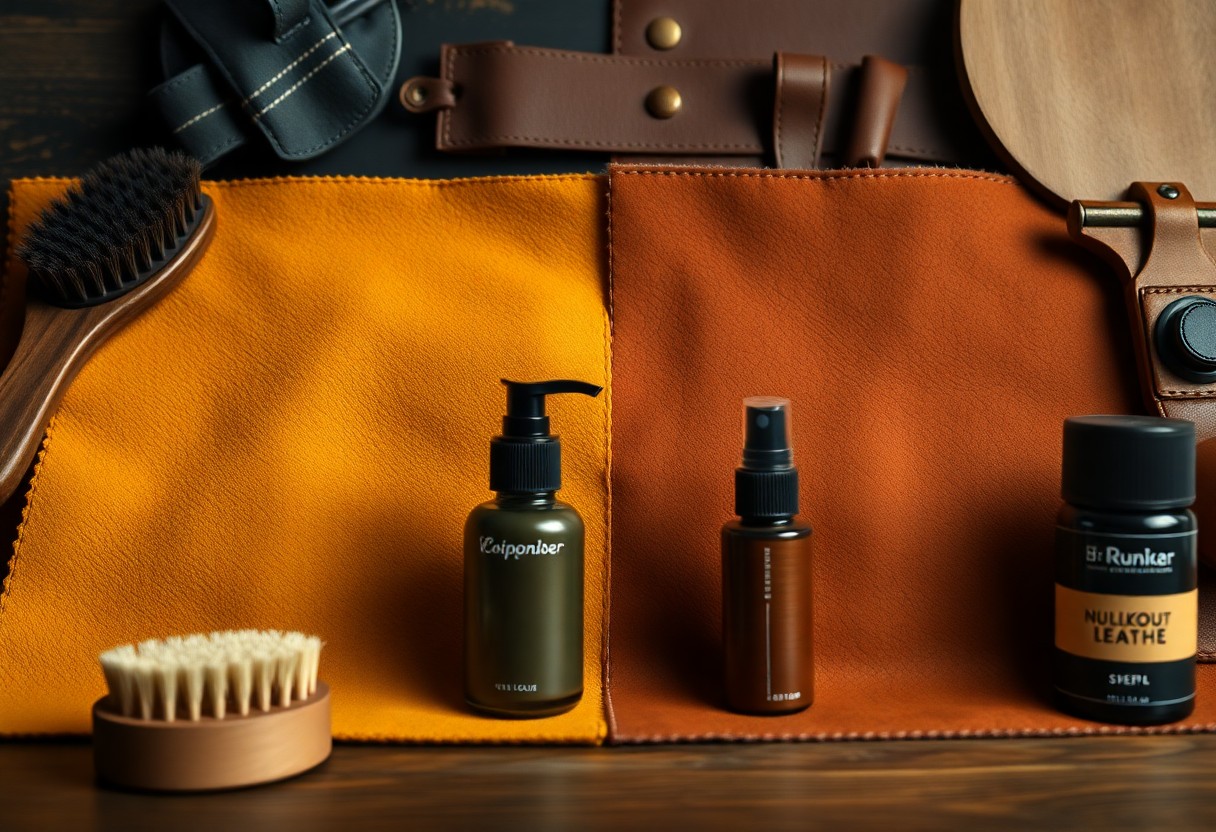
Recognize Key Differences Among Leather Types for Smart Choices
Grasping the basic distinctions between nubuck, suede, and roughout leather is vital when evaluating their construction and individual characteristics. Each type exhibits unique properties suitable for various applications and levels of wear. By understanding these differences, you can make more informed choices regarding your leather goods, ensuring you select the best options tailored to your lifestyle and specific needs.
| Feature | Characteristics |
|---|---|
| Origin | Grain layer vs Corium layer |
| Surface | Fine vs Coarse nap |
| Durability | High to moderate resistance |
| Maintenance | Regular to intensive care |
| Applications | Footwear to accessories |
Comparative Examination of Material Structures in Napped Leathers
Now, let’s examine how these leather types diverge in their fundamental structures:
| Leather Type | Structure |
|---|---|
| Nubuck | Sanded grain layer |
| Suede | Split corium layer |
| Roughout | Reversed full grain |
Analyzing Surface Textures for Enhanced Understanding
To gain a clearer perspective on the surface characteristics, it’s important to examine the nap length and texture of each leather type. Nubuck features the shortest and finest nap, resulting in a smooth tactile experience, while roughout displays a more irregular, coarse texture that contributes to its rugged appeal. The material differences in texture significantly influence how each leather type reacts to wear and treatment, affecting their overall care requirements and longevity.
Importantly, suede develops a unique patina over time, adding charm to its look, whereas nubuck maintains a more uniform appearance throughout its lifespan, showcasing its inherent durability and resilience.
Consider Key Durability Factors for Extended Lifespan
If longevity is your main concern, it's vital to consider several key factors that significantly impact the durability of leather:
- Water resistance varies notably among leather types
- Wear patterns develop differently based on usage
- Structural integrity is influenced by the specific leather type
Any damage to the surface necessitates specialized repair methods to effectively restore it.
Environmental factors also play a crucial role in the durability of leather:
- UV exposure can affect color retention
- Temperature fluctuations impact leather flexibility
- Moisture levels significantly influence overall material stability
When selecting protective treatments, ensure they are compatible with your specific leather type for optimal results.
Implement Essential Care and Maintenance Practices for Napped Leathers
Unlike smooth leathers, napped leathers require specific care techniques to preserve their texture and overall appearance. Your nubuck, suede, and roughout leather items demand regular brushing, moisture protection, and careful cleaning to maintain their unique characteristics. These materials are more susceptible to staining and water damage than smooth leather, underscoring the necessity of proper maintenance routines to prolong their lifespan.
Learn Effective Cleaning Techniques for Napped Leather Items
To clean your napped leather items efficiently, use a specialized suede brush and work in a single direction to gently lift surface dirt. For tougher stains, a suede eraser can be an invaluable tool, and it's recommended to avoid water-based cleaning methods whenever feasible. For deeper cleaning, utilize products specifically designed for your leather type, as traditional leather cleaners may adversely affect the nap and texture.
Implement Protective Strategies for Napped Leather Longevity
To protect your napped leather, applying a high-quality water repellent spray is your best defense. Treat new items prior to their initial use and plan to reapply this protection every 3-4 months. This method creates a protective barrier while allowing the leather to maintain its breathability and natural look.
Understanding appropriate protection techniques is essential for enhancing the lifespan of your leather items. Regular maintenance includes thorough inspections for wear spots, reapplying protective treatments after significant use, and avoiding direct heat or sunlight exposure. Tailor your protection routine according to how frequently you use your items, increasing the frequency for everyday wear.
Optimal Storage Practices for Napped Leather
When it comes to storing napped leather, careful attention to environmental conditions is critical. It is advisable to store your items in a cool, dry location, away from direct sunlight. For footwear, utilizing shoe trees can help maintain their shape, while stuffing bags with paper offers additional support. Never store leather items in plastic bags, as they need to breathe to preserve their quality and prevent moisture buildup.
For long-term storage, opt for breathable cloth bags, ensure proper air circulation, and routinely check for moisture or mold. Aim to maintain 40-50% humidity in the storage area to avert the leather from drying out or developing mildew. Keep items separated to prevent color transfer and to maintain their individual shapes.
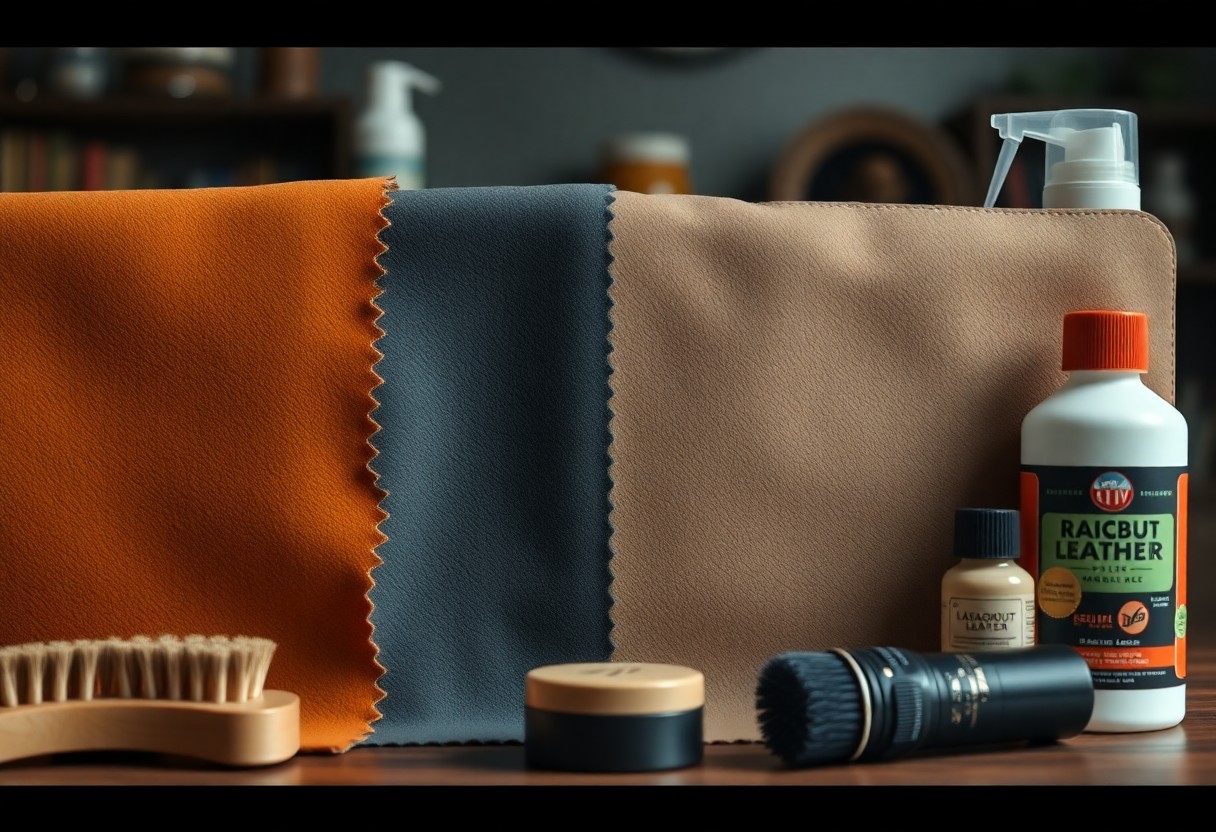
Assess Practical Applications and Uses of Various Leather Types
Your choice of nubuck, suede, or roughout leather has a significant impact on the durability and visual appeal of the final product. Each type serves distinct purposes based on their unique characteristics. Nubuck is particularly well-suited for high-durability applications, while suede offers a more flexible and softer option for fashion items, showcasing its versatility across various contexts.
Footwear Applications: Selecting the Ideal Leather Type
While all three leather types are appropriate for footwear, each has its particular strengths. Nubuck excels in outdoor and work boots due to its unmatched durability, while split suede is an excellent choice for stylish dress shoes and casual sneakers. Roughout leather, with its rugged texture and resilience, is perfect for crafting high-performance hiking boots that effectively resist scuffs and scratches, ensuring your feet stay protected in rugged conditions.
Garment Manufacturing: Choosing the Best Leather for Clothing
The applications of these leathers in garment manufacturing differ widely based on their specific properties. Suede is particularly well-suited for fashionable jackets, while roughout leather is favored for durable workwear that withstands the demands of daily use. Although nubuck is less common in clothing, it is an excellent choice for protective panels in motorcycle gear, providing both style and safety.
For instance, split suede is often found in lightweight jackets and vests, while roughout leather is preferred for heavy-duty work shirts and pants. The choice of material typically aligns with the intended use of the garment—fashion items generally incorporate softer suedes, while protective gear benefits from the sturdiness of nubuck or roughout options.
Accessory Design: Utilizing Leather Types for Distinctive Creations
These leathers also play a crucial role in crafting various accessories. Nubuck is ideal for creating stylish watch straps and belts, while suede is well-suited for producing attractive bags and wallets. Roughout leather is particularly effective for durable outdoor gear, like rugged backpacks designed to endure harsh conditions and environments.
With thoughtful material selection, you can design accessories that align perfectly with their intended functions. Split suede works best for decorative items, while nubuck and roughout shine in products that require high wear resistance. Always consider potential water exposure when choosing the appropriate leather type for outdoor accessories to ensure long-lasting performance.
Comprehend Factors That Affect Leather Quality
It is crucial to acknowledge that the quality of napped leather is influenced by several vital factors, including hide selection, tanning processes, and manufacturing techniques. The durability and appearance of the final product significantly depend on these essential considerations.
Recognizing the Importance of Hide Selection for Leather Quality
To guarantee the highest quality, it is imperative to understand that premium hides come from animals raised in optimal conditions. These hides display fewer surface imperfections and feature a more uniform fiber structure. The quality of your leather begins with selecting hides that have minimal scars and appropriate thickness, which greatly influences the end product's durability and aesthetic.
The Impact of Tanning Processes on Leather Characteristics
The tanning method used, whether vegetable or chrome tanning, profoundly affects the ultimate quality of the leather. Each technique imparts distinct attributes related to water resistance, flexibility, and color absorption. This critical stage necessitates meticulous control over temperature, pH levels, and chemical concentrations, as the durability and texture of your leather are directly influenced by these carefully managed conditions throughout the extensive 4-6 week tanning process.
Manufacturing Techniques That Shape Leather Quality
In the production of napped leather, specialized buffing techniques are used to create the distinctive surface texture. The final appearance of your leather is significantly determined by the depth of buffing and fiber exposure during this process. A consistent manufacturing method is essential for ensuring uniform nap height and direction, as these factors directly correlate with the leather’s wear resistance and overall visual appeal.
Evaluate the Pros and Cons of Different Napped Leather Types
Every type of napped leather presents unique attributes that make it suitable for various applications. Your decision between nubuck, suede, and roughout leather should be guided by your specific needs and intended use, ensuring you select the best option for your situation.
| Pros | Cons |
|---|---|
| Unique aesthetic appeal | Requires regular maintenance |
| Soft, comfortable texture | More susceptible to water damage |
| Good breathability | Shows wear marks easily |
| Variety of color options | Needs specialized cleaning products |
| Versatile applications | Higher maintenance costs |
Understanding the Benefits of Each Napped Leather Type
Each type of napped leather presents specific advantages tailored to different requirements. Nubuck offers exceptional durability due to its dense grain structure, making it ideal for high-use items. In contrast, suede provides remarkable flexibility and softness, perfect for fashionable designs. Meanwhile, roughout leather combines unique texture with strength, making it a versatile option for diverse applications.
Limitations and Considerations for Napped Leather Use
Despite their unique characteristics, each leather type has its limitations. Water exposure can significantly compromise untreated napped leathers, and ongoing maintenance is crucial for preserving their appearance and integrity. Your choice should reflect your intended use: indoor applications present fewer risks than outdoor scenarios, and factors such as climate and wear frequency will influence the leather’s durability and overall performance.
Ultimately, your understanding of nubuck, suede, and roughout leather will empower you to make informed choices for your leather goods. You can now identify critical differences among these leather types based on their construction, durability, and care needs. By implementing appropriate care strategies for each type—such as using waterproof sprays for nubuck, gentle brushing for suede, and tailored treatments for roughout leather—you can significantly prolong the lifespan of your leather items. This comprehensive knowledge equips you to select the best leather type for your specific requirements and maintain its quality over time.
Common Questions About Napped Leather Explained
What distinguishes nubuck from suede leather?
Nubuck is crafted from the grain layer of leather, which is gently sanded on the surface, resulting in enhanced durability and water resistance. In contrast, suede is made from the softer bottom layer (corium) of the hide, making it more porous and less resilient. Furthermore, nubuck possesses a shorter and finer nap compared to the longer, softer texture characteristic of suede.
What are the best practices for cleaning and protecting napped leathers?
For optimal care, apply a waterproof spray to all napped leathers before their initial use. Clean them using a specialized suede brush to efficiently remove dirt and restore the nap. For stains, utilize dedicated suede or nubuck cleaners. Avoid exposing these leathers to heavy rain, and allow wet leather to dry naturally at room temperature. Once dry, brush the leather to reinstate its nap.
How does roughout leather differ from reverse suede?
Roughout leather maintains the untreated and rough corium layer, while reverse suede has this layer sanded smooth. Both leather types feature the grain layer facing inward, enhancing their durability compared to split suede. However, roughout presents a more textured and uneven surface compared to reverse suede’s uniform nap. Both types are particularly suitable for unlined shoes due to the smoothness of their flesh sides.
The Article Guide to nubuck suede and roughout leather differences care tips and uses appeared first on My Shoes Finder
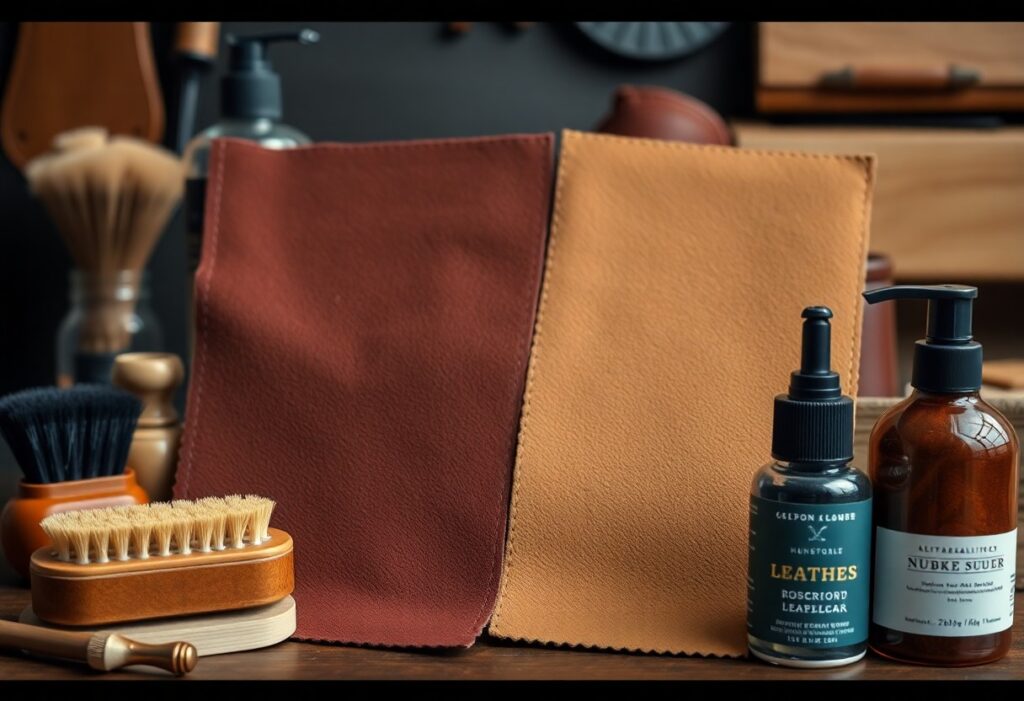
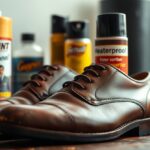

This is a great rundown on leather types—like a Tinder profile for nubuck, suede, and roughout leather! Who knew leather had its own personality traits? I think I’d swipe right on nubuck for its durability, but suede might be the fun date that’s all glamour until rain ruins the party. And let’s not even get started on roughout leather! It’s like that friend who insists on outdoor adventures but forgets to check the weather app.
I really appreciate the detailed exploration of different leather types! It’s fascinating how something as simple as the grain structure can influence not just durability, but also the overall aesthetic appeal of leather products. I’ve always been drawn to suede for its luxurious feel, but I never realized how delicate it is in terms of care and maintenance. This makes me think about my own experiences with leather goods—like that gorgeous suede jacket I bought a few years ago. I’ve had to be extra cautious after a rain shower, and your mention of roughout leather’s susceptibility to water damage resonates completely.